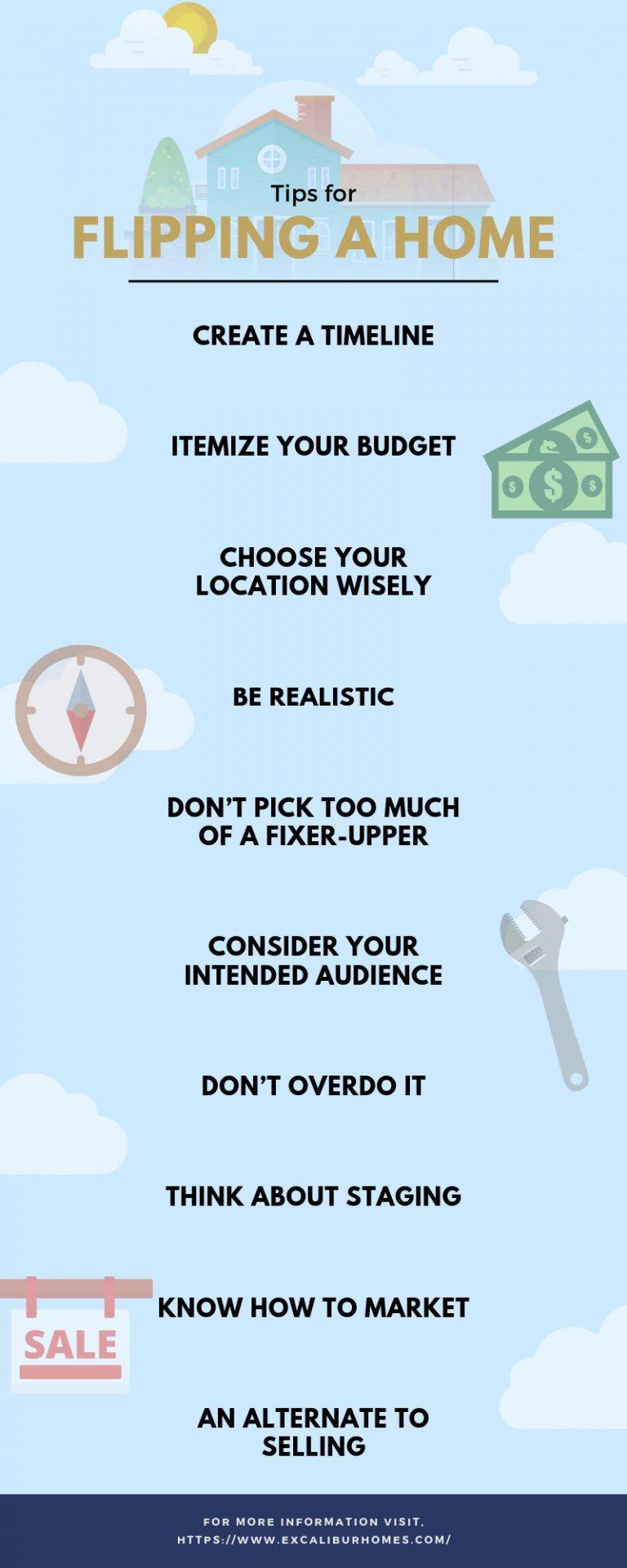
The profit you make when flipping a home is entirely determined by how you go about the process. As much as we may wish otherwise, the purchase of a house in need of work isn’t an immediate promise of financial success. Of course, this doesn’t mean you can’t make a considerable return on investment when flipping a home. Experienced flippers are successful because they’ve figured out exactly what they need to do in order to turn a profit.
If you’re considering entering this market, you’ll fare best by arming yourself with the proper tools right from the start. If you do, you may make significant strides even earlier than you expected. To make this possible, we’ve created a guide on how to flip houses as skillfully as the most experienced pros. We hope our list of tips for flipping a home helps you kickstart your endeavors.
Create a Timeline
Different people have different methods and strategies when it comes to productivity. Regardless of your working style, you should always go into a large-scale project with a detailed plan in place. Neglecting to set a timeline will cause stress and potential confusion down on the road. You may have to shuffle some things around later, but you’ll be able to manage this better if you can see things on paper and know where you are in the timeline.
Itemize Your Budget
Some people may think they just need to set an initial budget and go from there. However, we can’t stress enough the importance of knowing how you’ll allocate each portion of your budget. If you don’t do this, you may spend too much money early on in the project and find that you have to take out an extra loan or make unwelcome compromises. We recommended categorizing your budget according to the items listed below. Depending on your budget and working style, we recommend that you take things a step further and create branches of each of these categories.
- The property
- Improvements by room
- Any required licenses
- Staging costs
- A just-in-case fund
Choose Your Location Wisely
The location creates a fine line when you’re looking for a house to remodel in order to generate a considerable return investment. Be sure the home you invest in is in a good neighborhood, as a home in a run-down neighborhood isn’t likely to attract renters or buyers. You’ll also want to look at the location in terms of accessibility. Buyers like short commutes, and they may not be willing to drive 20 minutes to reach the nearest grocery store or their favorite coffee shop.
Be Realistic
It’s important that you go into this process with realistic expectations. Don’t expect to double your profit or remodeling the home in a matter of weeks. You’re likely to encounter some unexpected roadblocks, and you need to be ready to handle them. As such, you have to recognize what you’re getting into and prepare to be flexible. This isn’t going to be an easy process, and you can’t expect it to be as glamourous as your favorite HGTV show.
Don’t Pick Too Much of a Fixer-Upper
This may seem to contradict the entire point of flipping a home, but you want to be sure to choose a project that’s manageable. A home with serious faults may cost more than you can realistically sell it for. As such, be sure to thoroughly evaluate a home before deciding to purchase it. Have an inspector perform a walk-through before you sign any papers, and get an estimate on how much all the repairs would cost. Once you’ve done this, decide how these factors will work alongside the home’s purchase price.
Consider Your Intended Audience
Study the demographics of the area and decide what buyers you’ll be targeting. You want to have this in mind before you start planning how you’ll improve the house. Whoever you plan to sell to has everything to do with the plan you choose to put into place. If you don’t have a target, you can’t hit the bull’s-eye. Your intended audience will also affect how you choose to market your home. If you have a demographic in mind, do everything you can to be sure to sell to them.
Don’t Overdo It
Make sure there’s a method to the madness and that you don’t go overboard when making improvements. Over-renovating can not only hurt your budget, but also turn away potential buyers. The house will naturally receive a complete overhaul, but you also want to give buyers the chance to envision the house how they’d like it. You don’t want to do too much work—adding too much to the house may create aspects that buyers will want to take away, and you don’t want them to have to consider that effort.
Think About Staging
Staging is an important part of selling a home. It helps buyers visualize a lifestyle, and it also enhances any improvements you’ve made to the home. You’ll want to be thoughtful about staging the home and have a vision in mind from the start of the buying process. This is another process you don’t want to overdo—just add enough furniture and décor to create a sneak peek of the home’s potential.
Know How to Market
Marketing is one of the most important aspects of selling a home. Though it’s not a part of the actual flipping process, it will help you find the buyers you’ve been targeting since the very beginning. Once you’ve completed your project, you’ll need to show it off in the way it deserves and make sure that people actually see it.
An Alternate to Selling
Though many people flip homes with the intent of selling, you may consider a more long-term option. Selling right away will bring you immediate profit, but renting is another potential option. If you want to make a passive income that will keep you comfortable long into your retirement, this may be an option that works for you. If you’re renting out several properties, you’ll want to find a reliable management company. For high-quality Decatur property management, contact Excalibur Homes today.



